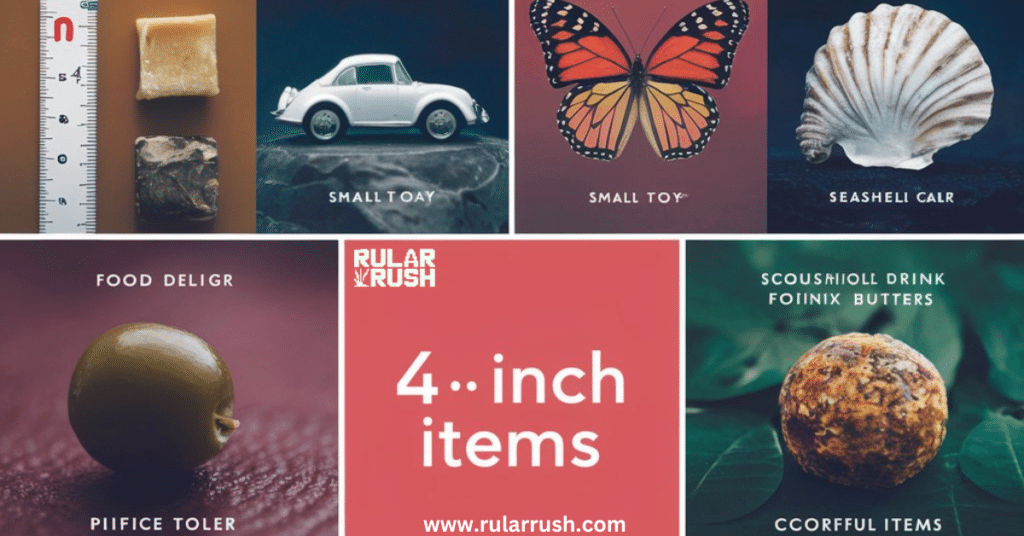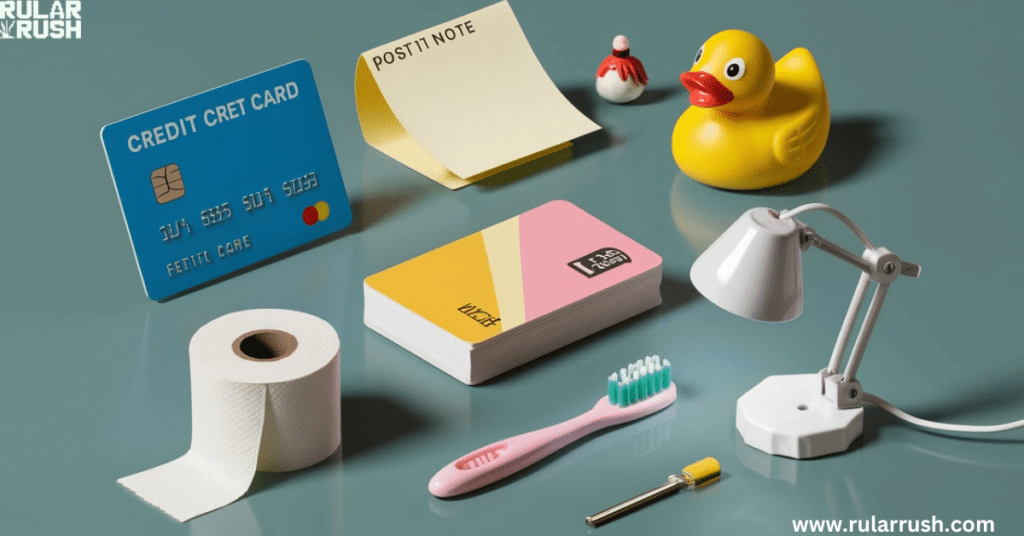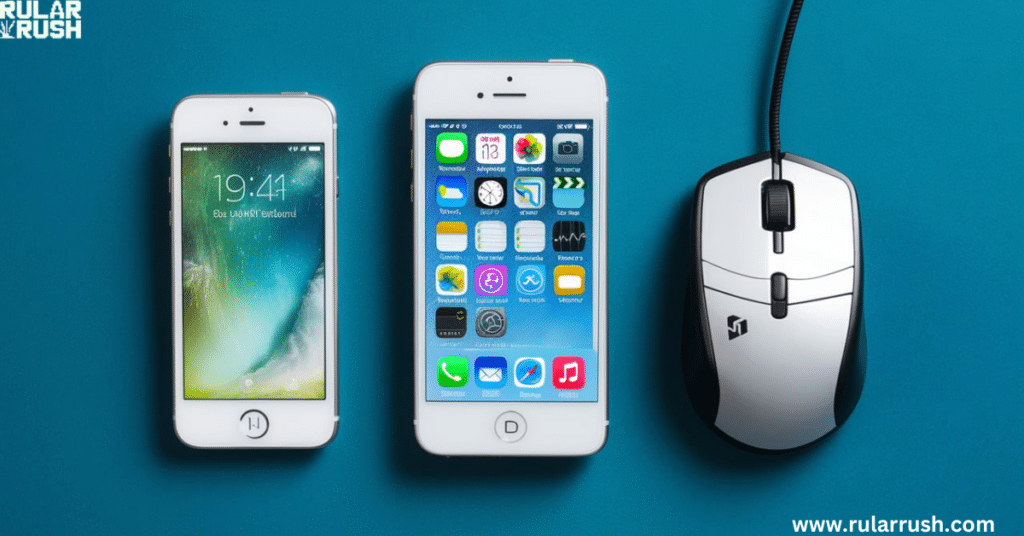
In a world where size often matters, the humble 4-inch measurement pops up more often than you might think. From the gadgets we use daily to the snacks we munch on, 4 inches long objects are everywhere, quietly shaping our lives in ways we rarely notice.
Let’s dive into this fascinating world of pocket-sized proportions and discover how these common things that are 4 inches pack a punch far beyond their size.
Introduction: The Ubiquity of 4-Inch Objects
Ever stopped to wonder how many things around you measure up to 4 inches? It’s a length that’s just right for many everyday items – not too big, not too small. It’s the Goldilocks of measurements, fitting comfortably in our hands and pockets.
But why 4 inches? This length often strikes the perfect balance between functionality and portability. It’s long enough to be useful but short enough to be convenient. From tech gadgets to nature’s creations, 4-inch wonders surround us, each with its own unique story and purpose.
Consider this: the width of your palm, the length of a standard stick of gum, the size of a credit card – all hover around this magical 4-inch mark. It’s a dimension that’s become so ingrained in our daily lives that we often overlook its significance. But today, we’re going to change that.
We’ll explore the world of 4-inch objects, uncovering their secrets, their histories, and their impacts on our lives.
Household Items: The 4-Inch Staples of Daily Life

The Trusty Credit Card
Let’s kick things off with something you probably have in your wallet right now – the credit card. Standard credit cards are a perfect example of everyday objects that are 4 inches long, measuring precisely 3.37 inches in length. But did you know this size isn’t arbitrary?
The dimensions of credit cards are standardized worldwide by the International Organization for Standardization (ISO). This uniformity ensures that cards work with ATMs and point-of-sale terminals globally. It’s a prime example of how a 4-inch object size can have international impact!
Fun Fact: If you stack about 432 credit cards, you’d reach the height of an average American man (5’9″). Talk about a tall order!
But the story of credit cards goes beyond just their size. The magnetic stripe on the back of your card, which also adheres to the 4-inch length, can store up to 60 characters of information. That’s enough to securely identify you and your account across millions of transactions worldwide.
The Classic Post-it Note
Another household staple measuring close to 4 inches is the iconic Post-it note. These sticky wonders typically measure 3 inches by 3 inches, just shy of our 4-inch focus but worth mentioning due to their ubiquity and impact.
Invented accidentally by Dr. Spencer Silver at 3M in 1968, Post-it notes revolutionized office communication. Their size was chosen to be large enough for quick notes but small enough to stick anywhere without being obtrusive.
Did you know? The original Post-it note color was yellow because it was the only scrap paper available in the lab where they were developed!
The impact of Post-it notes extends far beyond just jotting down quick reminders. They’ve been used in brainstorming sessions that have led to groundbreaking innovations, served as impromptu bookmarks in novels that became bestsellers, and even played a role in creating colorful pixel art murals in office windows worldwide.
Tech Gadgets: 4 Inches of Innovation

The iPhone 4: A Game-Changer
Remember the iPhone 4? This game-changing smartphone, released in 2010, sported a 3.5-inch display diagonally. While not exactly 4 inches long, it’s close enough to warrant mention, especially considering its impact on mobile technology.
The iPhone 4’s size was considered optimal for one-handed use, a factor that influenced smartphone design for years. It’s a prime example of how objects around 4 inches can shape entire industries.
| iPhone Model | Display Size | Year Released |
|---|---|---|
| iPhone 4 | 3.5 inches | 2010 |
| iPhone 5 | 4 inches | 2012 |
| iPhone 12 mini | 5.4 inches | 2020 |
The iPhone 4’s influence on smartphone design can’t be overstated. Its 3.5-inch screen, just shy of 4 inches, was the result of extensive research into human hand ergonomics. Steve Jobs famously declared it the “perfect size for consumers,” arguing that it allowed users to comfortably reach all areas of the screen with one thumb.
This design philosophy led to years of smartphones hovering around the 4-inch mark, before the trend towards larger screens took hold. Even today, with phones routinely exceeding 6 inches, there’s a dedicated market for more compact devices that harken back to the 4-inch era.
Standard Computer Mice
Many computer mice hover around the 4-inch mark in length. This size has been found to be ergonomically suitable for most hand sizes, allowing for comfortable use over extended periods.
The evolution of the computer mouse is a fascinating journey of ergonomics and technology. From the boxy designs of the 1980s to the sleek, contoured shapes of today, the approximately 4-inch length has remained a constant.
Pro Tip: When choosing a mouse, consider one that allows your hand to rest at a 45-degree angle to reduce strain on your wrist.
The 4-inch length of most computer mice isn’t just about comfort – it’s about precision too. This size allows for fine motor control, enabling users to make pixel-perfect selections in graphic design software or nail those headshots in first-person shooter games.
Moreover, the 4-inch mouse has played a crucial role in the development of user interface design. The concept of “point and click” that we take for granted today was built around the capabilities of these pocket-sized peripherals.
Nature’s 4-Inch Wonders

The Golden Poison Frog
Mother Nature also dabbles in 4-inch creations. The Golden Poison Frog (Phyllobates terribilis) is a prime example. This tiny amphibian, measuring just about 4 inches long, packs a deadly punch.
Despite its small size, it’s considered one of the most toxic animals on Earth. A single frog carries enough poison to kill up to 20 humans! It’s a stark reminder that in nature, size doesn’t always correlate with impact.
- Habitat: Rainforests of Colombia’s Pacific coast
- Diet: Small insects and arthropods
- Conservation Status: Endangered due to habitat loss
The Golden Poison Frog’s toxicity is a result of its diet. It accumulates and concentrates alkaloid poisons from the ants and other insects it eats. Interestingly, frogs raised in captivity on a different diet are not poisonous, highlighting the intricate relationships between species in their natural habitats.
This 4-inch wonder has also contributed to medical research. Scientists are studying its powerful toxins for potential applications in pain relief and heart health. It’s a powerful reminder that even the smallest creatures can have an outsized impact on our world.
A Hummingbird’s Wingspan
Many hummingbird species boast a wingspan of around 4 inches. These tiny aviators are marvels of nature, capable of hovering in mid-air and even flying backwards!
The Ruby-throated Hummingbird, common in North America, has a wingspan of 3.1-4.3 inches. This 4-inch span allows for incredible maneuverability, enabling these birds to visit up to 2,000 flowers in a single day!
- Did you know? Hummingbirds can flap their wings up to 80 times per second, making them the fastest beating wings in the animal kingdom!
The 4-inch wingspan of hummingbirds is a masterpiece of evolutionary engineering. It allows these tiny birds to hover with precision, fly backwards, and even upside down – feats that no other birds can accomplish. This incredible maneuverability comes at a cost, though. Hummingbirds have one of the highest metabolic rates relative to their body size of any animal on Earth.
Their impact extends far beyond their size. As pollinators, hummingbirds play a crucial role in maintaining biodiversity. Some plant species have even evolved tubular flowers specifically to attract these 4-inch marvels, showcasing the profound impact these tiny birds have on their ecosystems.
Food and Drink: 4 Inches of Flavor

The Ubiquitous Tea Bag
Tea bags, those humble purveyors of comfort, typically measure around 4 inches long when including the string. This length allows for easy dunking and retrieval from your favorite mug.
The invention of the tea bag was a happy accident. In 1908, tea importer Thomas Sullivan sent samples of tea in small silk bags to customers. Some assumed the entire bag was meant to be dunked in hot water, inadvertently creating the modern tea bag!
The 4-inch length of a tea bag, including its string, is no accident. It’s designed to allow the bag to be easily lowered into and retrieved from a standard mug, which is typically about 3.5 inches tall. This design ensures that the tea bag can be fully immersed for optimal brewing, while the string remains easily accessible.
Moreover, the size of tea bags has been optimized over the years to hold just the right amount of tea leaves for a single serving. This standardization has made it easier for consumers to brew a consistent cup of tea, regardless of the brand or type of tea they choose.
A Standard Slice of Bread
While bread slice sizes can vary, many standard slices hover around the 4-inch mark in width. This size has been found to be ideal for toasters and sandwiches alike.
The science of the perfect toast is more complex than you might think. The 4-inch width allows for even heat distribution in most toasters, resulting in that satisfying crunch we all love.
Toast Tip: For the perfect slice of toast, aim for a temperature of 309°F (154°C). This temperature triggers the Maillard reaction, which creates those delicious toasty flavors!
The 4-inch width of a standard bread slice is the result of decades of optimization in the baking industry. This size allows for efficient slicing of standard loaves, minimizes waste, and fits perfectly in most toasters. It’s also ideal for sandwiches, providing a good balance of bread to filling ratio.
Interestingly, the size of bread slices has varied throughout history and across cultures. The current standard size in many countries is a result of the industrialization of bread production in the early 20th century. Today, this 4-inch standard influences everything from sandwich shop operations to the design of lunch boxes and food packaging.
Office Supplies: 4 Inches of Productivity

Highlighters and Marker Pens
Many standard-size highlighters and marker pens measure close to 4 inches long. This length provides a comfortable grip while being compact enough to fit in pencil cases and desk organizers.
The psychology of color in note-taking is fascinating. Studies have shown that using different colors can improve memory retention by up to 18%!
The 4-inch length of highlighters and marker pens is a result of ergonomic studies and practical considerations. This size allows for a comfortable grip for most hand sizes, providing enough leverage for smooth writing or highlighting without being unwieldy.
Moreover, the ink reservoir in a 4-inch highlighter is typically sufficient to last for months of regular use. This balance between size and capacity makes these tools efficient and cost-effective for both personal and professional use.
Paper Clips (When Straightened)
A standard paper clip, when straightened, measures about 4 inches long. This seemingly mundane object has a rich history and surprising versatility.
During World War II, paper clips became a symbol of resistance in Norway. Norwegians wore them on their lapels as a silent protest against Nazi occupation, as paper clips were invented by a Norwegian patent clerk.
Paper Clip Art: There’s a surprising subculture dedicated to creating art from paper clips. Some artists have created intricate sculptures using thousands of these 4-inch wonders!
The 4-inch length of a straightened paper clip is no coincidence. This length provides enough material to securely hold several sheets of paper together while remaining small enough to be unobtrusive. The elegant simplicity of the paper clip’s design has made it a staple of offices worldwide for over a century.
Beyond their intended use, paper clips have found numerous alternative applications. They’ve been used as emergency fixes for eyeglasses, makeshift hooks for hanging decorations, and even as tools for resetting electronic devices. Their 4-inch length when straightened makes them versatile tools in a pinch.
Personal Items: 4 Inches in Your Pocket

The Width of an Average Adult Hand
The average adult hand measures about 4 inches across at its widest point. This natural “ruler” has been used for centuries as a quick measuring tool.
Interestingly, hand size often correlates with height. On average, your hand length (from wrist to tip of middle finger) is about 11% of your height.
The 4-inch width of an average adult hand has influenced design across numerous industries. From the size of smartphone screens to the grip of power tools, this dimension has been a key consideration in creating products that feel natural and comfortable to use.
In cooking, the hand width is often used as a quick measuring tool. A 4-inch hand width is roughly equivalent to a quarter-pound burger patty or a serving of meat. Chefs often use their hands to estimate portion sizes quickly and consistently.
Lipstick Tubes
Standard lipstick tubes often measure close to 4 inches in length. This size has been perfected over decades to balance portability with ease of application.
The history of lipstick packaging is a journey through materials science and design. From ancient Egyptian reed cases to today’s twist-up tubes, the approximately 4-inch length has remained surprisingly constant.
The 4-inch length of a lipstick tube is a masterpiece of design optimization. It provides enough product for hundreds of applications while remaining small enough to fit comfortably in a purse or pocket. The slim profile allows for precise application, while the length provides enough grip for steady handling.
Interestingly, the amount of lipstick in a standard 4-inch tube is carefully calculated. Most tubes contain about 0.1 ounces of product, which typically lasts for 300 applications. This balance between size and product amount helps ensure that the lipstick is likely to be used up before it expires, reducing waste.
Unexpected 4-Inch Objects

Guitar Picks
While guitar picks come in various sizes, many popular models measure around 4 inches in circumference. The size and shape of a pick can significantly affect a guitarist’s sound and playing style.
Famous guitarists often have strong preferences for their picks:
- Eric Clapton: Uses thin, 4-inch circumference picks for his bluesy style
- Carlos Santana: Prefers slightly smaller, thicker picks for his distinctive tone
The size of a guitar pick, while small, plays a crucial role in a guitarist’s sound and technique. A pick with a 4-inch circumference provides a good balance between control and flexibility. It’s large enough to grip comfortably but small enough for quick, precise movements.
The thickness of the pick also matters. Thinner picks (around 0.5mm) are more flexible and produce a brighter tone, while thicker picks (up to 1.5mm) offer more control and a warmer sound. Many guitarists keep an assortment of picks to achieve different tones and playing styles.
The Length of a Bumblebee
Bumblebees, those crucial pollinators, typically measure between 0.4 to 0.8 inches in length. While not quite 4 inches long themselves, four bumblebees lined up nose to tail would measure about 4 inches!
These fuzzy flyers play a vital role in pollination, thanks in part to their size. Their 4-inch collective length allows them to access a wide variety of flowers, making them super-pollinators in many ecosystems.
The size of bumblebees is a perfect example of nature’s efficiency. At around 0.4 to 0.8 inches, they’re large enough to carry significant amounts of pollen, yet small enough to maneuver inside a wide variety of flowers. Their fuzzy bodies are excellent pollen collectors, making them more efficient pollinators than many other insects.
Interestingly, bumblebees can fly in cooler temperatures and lower light levels than many other insects. This, combined with their size, allows them to be active for longer periods and in more diverse conditions, further enhancing their role as crucial pollinators.
Practical Applications: Measuring Without a Ruler
Knowing common things that are 4 inches long can be surprisingly useful. Here are some practical ways to measure 4 inches without a ruler:
- Credit Card Length: Use the long edge of your credit card as a guide.
- Dollar Bill Width: The width of a dollar bill is close to 4 inches.
- Hand Width: Your palm width is typically close to 4 inches.
- Stick of Gum: A standard stick of chewing gum is usually about 4 inches long.
- Large USB Drive: Many large-size USB flash drives measure around 4 inches.
These everyday measurement techniques can be handy in a pinch, whether you’re hanging a picture or measuring for a DIY project.
But the applications of these 4-inch measurements go beyond simple DIY tasks. Let’s explore some more practical uses:
In Cooking and Baking
Knowing the size of common 4-inch objects can be incredibly useful in the kitchen. For example:
- A 4-inch circle is the perfect size for many single-serving desserts, like mini pies or tarts.
- When making sushi, a 4-inch section of nori sheet is ideal for a hand roll.
- Many cookie recipes call for spacing dough balls about 4 inches apart – you can use a credit card to quickly gauge this distance.
In Gardening
Gardeners can benefit from knowing 4-inch measurements too:
- Many seedlings should be planted about 4 inches apart. Use a stick of gum to measure the distance quickly.
- When deadheading flowers, leaving a 4-inch stem often promotes healthier regrowth.
- A 4-inch layer of mulch is often recommended for optimal moisture retention and weed prevention.
In Fashion and Sewing
For those who sew or are interested in fashion:
- A 4-inch inseam is standard for many types of shorts.
- Hem allowances are often 4 inches for pants that may need lengthening later.
- Many belt buckles are about 4 inches wide, which can be useful when shopping online.
In Home Improvement
Even in home improvement projects, the 4-inch measurement comes in handy:
- Standard baseboards are often 4 inches tall.
- Deck boards are typically spaced about 4 inches apart for proper drainage.
- Many drawer pulls and cabinet handles have a 4-inch center-to-center measurement.
The Impact of 4-Inch Objects on Industry and Design
The prevalence of 4-inch objects has had a significant impact on various industries and design principles. Let’s delve deeper into how this seemingly arbitrary measurement has shaped our world.
In Manufacturing
Many manufacturing processes are optimized around standard sizes, with 4 inches being a common benchmark. For example:
- Packaging Industry: Many food containers, especially for single-serve items, are designed around a 4-inch width or diameter. This standardization allows for efficient use of materials and shipping space.
- Electronics: The 4-inch measurement often influences the design of electronic components. For instance, many standard hard drives are 4 inches wide, allowing for consistency in computer case designs.
In Ergonomics
The 4-inch measurement often aligns well with human ergonomics:
- Hand Tools: Many hand tools, from screwdrivers to paintbrushes, have handles around 4 inches long. This length allows for a comfortable grip for most adult hands.
- User Interface Design: In touchscreen interfaces, a target size of about 4 inches is often used for important buttons or icons, as this size is easily tappable by most users.
In Architecture and Interior Design
The 4-inch measurement is a common module in architecture and interior design:
- Tile Design: Many standard tiles are 4 inches square, allowing for easy calculations and installations in various spaces.
- Wall Studs: In many countries, wall studs are placed 16 inches apart (4 x 4 inches), influencing everything from drywall sheet sizes to the placement of electrical outlets.
The Future of 4-Inch Objects
As we look to the future, it’s interesting to consider how the prevalence of 4-inch objects might evolve. Will technological advancements and changing consumer preferences alter this standard?
Miniaturization Trends
In some areas, particularly technology, there’s a trend towards miniaturization. However, the 4-inch measurement often represents a sweet spot between functionality and usability. For example:
- While smartphones trended towards larger screens for a while, there’s been a recent resurgence in demand for more compact phones, closer to the original 4-inch display size.
- In wearable technology, 4-inch display devices like smartwatches have found a comfortable niche, balancing screen real estate with wearability.
Standardization and Globalization
As global trade continues to grow, standardization becomes increasingly important. The 4-inch measurement, being close to 10 centimeters, often serves as a convenient standard in both imperial and metric systems. This could lead to even more products adopting this size in the future.
Sustainability Considerations
As sustainability becomes a greater concern, the efficiency of 4-inch objects could become more important:
- Packaging sized around 4-inch modules can be more efficient to produce and ship, potentially reducing waste.
- Products designed around this common measurement may be easier to repair or have parts replaced, promoting a more circular economy.
Conclusion: The Mighty 4 Inches
In our journey through the world of 4-inch wonders, we’ve uncovered a fascinating dimension that shapes our daily lives in countless ways. From the credit cards in our wallets to the bumblebees in our gardens, 4-inch objects are everywhere, silently influencing design, technology, and even nature itself.
We’ve seen how this seemingly arbitrary measurement has become a cornerstone of ergonomic design, technological innovation, and industrial standardization. It’s a testament to the idea that in both human creation and natural evolution, form often follows function.
The ubiquity of 4-inch objects serves as a reminder that the most impactful things in life often come in small packages. It challenges us to look closer at the world around us, to appreciate the thought and precision that goes into even the most mundane items we encounter every day.
As you move forward, carry this newfound awareness with you. Notice the 4-inch wonders in your environment. Appreciate the careful balance of form and function they represent. And remember, whether it’s a stick of gum or a smartphone screen, these 4-inch marvels are more than just objects – they’re snapshots of human ingenuity and nature’s efficiency.
In a world that often celebrates bigness, let’s take a moment to appreciate the small things. After all, it’s often the tiniest details that make the biggest difference. So the next time you encounter a 4-inch object, pause and reflect – you’re holding a small piece of a much bigger story in your hands.

Elizabeth is an experienced blogger at “Rular Rush,” specializing in delivering precise and insightful content on various measurement topics. With a passion for simplifying complex concepts, she brings clarity and depth to each post, making technical information easy to understand for readers worldwide.





